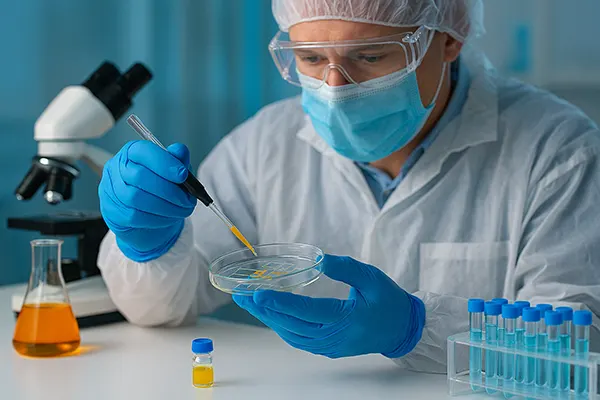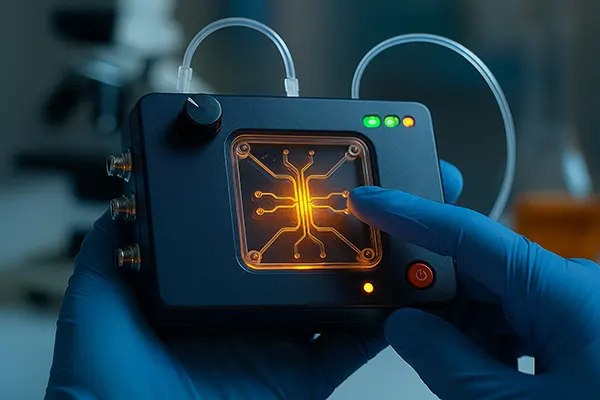Pocket Biofactories: Personalised Drug Manufacturing with Microfluidic Devices

In early 2025, the field of medicine witnessed a technological breakthrough that promises to redefine pharmaceutical accessibility and production. Scientists and engineers have developed portable biofactories—microfluidic devices capable of manufacturing medications on demand, directly at the point of need. These compact, highly efficient systems are designed to produce vaccines, antibiotics, and biologics, offering tailored treatment options especially in remote and emergency scenarios.
Revolution in On-Demand Medicine Production
Microfluidic biofactories work by manipulating fluids through tiny channels on a chip, allowing for the precise control of chemical reactions at a microscale. This precision makes it possible to synthesise small batches of high-quality drugs rapidly. Unlike traditional pharmaceutical factories, which require large-scale infrastructure, these portable labs operate in handheld or suitcase-sized units.
Developed collaboratively by researchers from institutions including MIT and the University of Toronto, these devices have already been tested for the production of key compounds such as monoclonal antibodies and mRNA-based vaccines. Their utility has become increasingly evident in disaster zones, field hospitals, and conflict areas where supply chains are often disrupted or non-existent.
One significant use case occurred during a field test in sub-Saharan Africa, where a prototype successfully synthesised a batch of anti-malarial drugs in under six hours. This type of rapid, localised response to medical needs could save thousands of lives, especially in areas underserved by traditional health infrastructure.
Advantages Over Conventional Pharmaceutical Supply Chains
Conventional medicine supply chains are often vulnerable to delays, shortages, and geopolitical instability. In contrast, microfluidic devices enable point-of-care manufacturing, reducing dependence on centralised factories and long-haul transportation. This is particularly critical in times of pandemic outbreaks or natural disasters.
Furthermore, because these systems can be programmed to create specific drugs based on individual prescriptions, they introduce a new standard of personalised healthcare. Patients in remote locations can receive tailored medications without waiting weeks for delivery from a central pharmacy.
Another advantage lies in the sustainability of production. Portable biofactories minimise waste and energy use, making them an environmentally favourable solution for long-term global healthcare support. They also lower the risk of contamination by isolating each production run.
Engineering and Software Behind the Innovation
The heart of these devices is a programmable microchip that controls the flow and combination of chemicals. Recent developments in micro-electromechanical systems (MEMS) and synthetic biology have allowed engineers to integrate sensors and control algorithms that ensure purity, consistency, and sterility of the final product.
Software interfaces enable users—even non-specialists—to operate the system using pre-set protocols. These include safety checks, diagnostic tools, and auto-calibration features, making the devices suitable for use by field medics and remote clinics with minimal training.
Open-source platforms have begun to emerge around this technology, encouraging collaboration and innovation. Developers can create new reaction recipes or modify existing ones to accommodate local medicinal needs, thereby enhancing adaptability and community involvement in drug manufacturing.
Testing and Real-World Applications
In early 2025, several NGOs and governmental health organisations began deploying biofactories in humanitarian missions. One notable example is their integration into mobile clinics serving displaced populations in northern Syria. Here, healthcare workers used the devices to produce broad-spectrum antibiotics directly in the field.
In the Arctic regions of Canada, where access to pharmaceuticals is limited due to weather and geography, microfluidic devices were successfully employed to generate insulin. The system performed reliably even under extreme cold, highlighting its robustness and adaptability.
The World Health Organisation has since initiated pilot programmes in Asia and South America, aiming to standardise the use of these devices as part of rapid-response medical kits. If widely adopted, these biofactories could become a staple in international aid and remote healthcare delivery.

Future Outlook and Ethical Considerations
While the promise of decentralised drug production is immense, there are still regulatory and ethical questions to address. Standardising production processes, ensuring quality control, and preventing misuse are ongoing challenges. Agencies such as the EMA and FDA are working on frameworks to validate and monitor mobile pharmaceutical labs.
Intellectual property is another concern. As biofactories become more widespread, ensuring equitable access to drug blueprints and synthesis protocols will be vital. Current trends indicate a growing push for open-access databases and community-driven regulation to prevent monopolisation of this life-saving technology.
Looking ahead, advancements in nanotechnology and AI-driven synthesis could enhance the capabilities of microfluidic biofactories further. The potential for automated diagnosis, combined with on-the-spot medication synthesis, might soon allow a single device to replace entire supply chains—revolutionising how medicine is delivered across the globe.
Integrating Biofactories into Global Health Strategy
As nations invest in healthcare resilience, integrating microfluidic devices into standard medical equipment can improve preparedness for future health emergencies. Portable drug synthesis will likely become an essential feature in national health systems and military field operations.
Moreover, the adaptability of the technology supports a wide range of healthcare goals—from responding to antibiotic resistance to providing immediate treatment in post-disaster zones. The technology’s modular nature ensures it can evolve alongside medical science.
In the coming years, international cooperation will be essential to ensure that this innovation reaches the communities that need it most. Through shared research, ethical deployment, and inclusive policy-making, biofactories could bridge longstanding gaps in global health equity.
